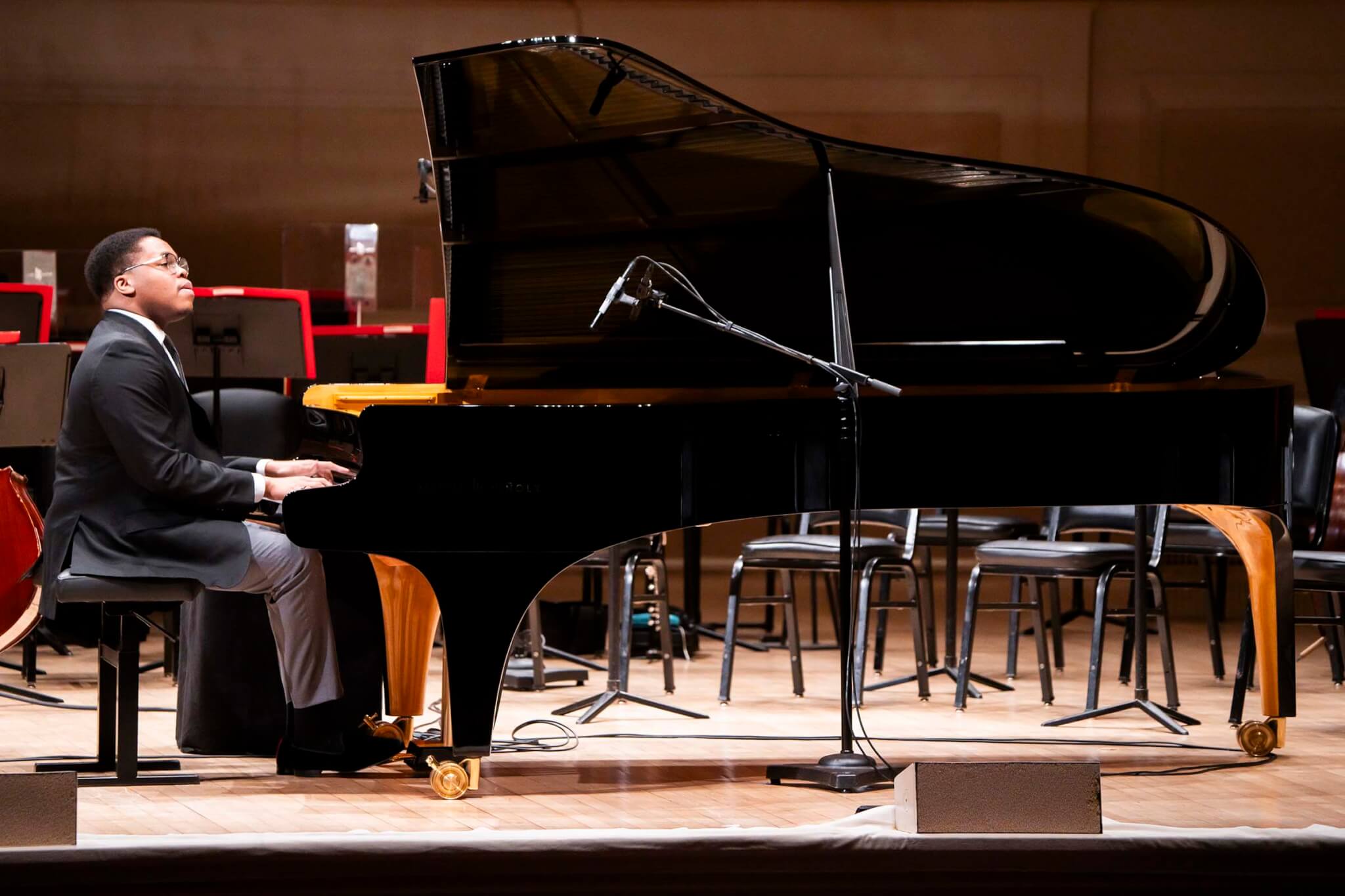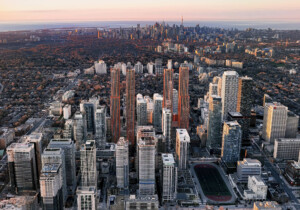Lovers of architecture and classical music united at Carnegie Hall on a recent Tuesday evening to celebrate the life of Uruguayan architect Rafael Viñoly, who died unexpectedly in March at 78. The packed house was there to witness a star-studded night of performances by the Philadelphia Orchestra, led by Music and Artistic Director Yannick Nézet-Séguin; world-famous violinist Itzak Perlman; the Isiah J. Thompson trio; and pianist Jonathan Biss.
In a heartfelt letter included in a special publication to commemorate the evening, Diana Viñoly, Rafael’s widow, described “moments fraught with doubt” during the 56 years they shared together: “Among them were the contradictions of our life in Argentina during the dictatorship and our decision to leave for New York City, the challenge of the postmodern movement, the mountain we climbed to deliver the Tokyo International Forum, [and] the demands of sustaining a large architectural practice.” Remembrances from Jay Bargmann, vice president of Rafael Viñoly Architects, and architecture critic Paul Goldberger preceded a series of projects with tributes from their associated clients.
Both the Philadelphia Orchestra and Thompson’s piano trio, which represented Jazz at Lincoln Center, were there to recognize Viñoly’s contributions to their institutions, as his office designed venues for both entities—the Kimmel Center for the Performing Arts and Frederick P. Rose Hall, respectively. “Just as the shape of a cello influences its tone, the shape of his home for music embodies and magnifies the energy and spirit of its sound,” Stephanie Naidoff, founding president of the Kimmel Center, wrote in the program. “Thus with the beautiful cello-shaped home for the Philadelphia Orchestra, he created a splendid and moving performance in itself.”
The program began with two numbers by the orchestra, which was then joined by Perlman for Ludwig Beethoven’s “Romance No. 2 in F major, Op. 50,” and Fritz Kreisler’s “Liebesfreud.” After intermission, Thompson’s trio (piano, double bass, tenor saxophone) played three short numbers—“Tricotism” by bassist and cellist Oscar Pettiford, followed by two Duke Ellington staples, “Do Nothing ‘Til You Hear From Me” and “C Jam Blues”—before Biss and the orchestra closed the evening with Beethoven’s Piano Concerto No. 5 in E-flat Major, Op. 73.
There was considerable musical star power on stage—and architectural star power in the audience—so it came as a surprise that, during the break, admirers rushed to the front for selfies with a shiny object: the Maene-Viñoly Concert Grand, a piano developed by Belgian master piano maker Chris Maene and Viñoly himself. The second portion of the program marked the instrument’s U.S. concert debut.

The piano’s design innovation is its curved keyboard, which follows the arc of a pianist’s arms as they rotate. Typical 88-key pianos are long enough that it is impossible to play in the low and high registers with the same technique that one uses in the middle octaves of the instrument. Playing in these extreme ranges requires more muscles and control; over time, this exertion can lead to repetitive stress injuries. The rest of the design is a result of the gently curved keyboard: The strings are arrayed radially, requiring a swoopy evolution of the classic piano curve to hold the larger soundboard. The action, which translates from finger-pressed keys to hammer-struck strings, is correspondingly radial. The frame, with mahogany finished black on the exterior and lined in maple, is supported on three elegant, curved legs with a similar form for the piano pedals.

Viñoly was an accomplished amateur pianist who played for nearly 70 years. In a 2011 Sunday Routine feature in The New York Times, he recounted playing for hours in the morning: “My pianos are my only big indulgence, but they’re a necessity. When I’m playing the piano is literally the only time I can be completely abstract and disconnected from the regular world and yet be connected—to my music.” After, he would head to the office to work a bit and tickle the ivories in the basement.

In 2016, Viñoly had a conversation with pianist and conductor Daniel Barenboim and pianist Martha Argerich after which he decided to explore this concept for a new piano; soon after, he partnered with Maene. The duo worked with piano kinematics researcher Renzo Pozzo, professor at the Department of Medical and Biological Sciences at the University of Udine in Italy, and German pianist and researcher Dr. Henriette Gärtner to determine the keyboard’s ideal arc. The University of Leuven, Belgium, helped finalize the soundboard’s configuration, and Technocon, a specialized engineering firm, resolved the structure for the cast iron frame. “It was an enormous challenge to materialize Rafael’s ideas and drawings and integrate them into the rules of traditional piano building,” Maene said. But “the effort led to an intense and fruitful collaboration.” The result is a handsome, sonorous, and powerful instrument.

The evening was also a rededication event for the Viñoly Foundation, whose “mission is to elevate public life through the transformative power of architecture, urban planning, education, the arts, and science.” The organization was originally founded in 2011 as the Rafael and Diana Viñoly Foundation, but now, renamed, is “shifting gears to build out [its] programs” after Viñoly’s sudden passing.
Between Thompson’s trio and Biss’s concerto, Román Viñoly, son of Rafael and Diana and director of Rafael Viñoly Architects, appeared onstage with his daughter Fanny to share the mission of his family’s foundation. The intent is to “push the real estate development ecosystem” to recognize the long-term value of civic engagement. Part of this includes investing in early-childhood education to order to create a future where communities are aware of—and are empowered to demand—design excellence from architects, politicians, and developers. Every building is a civic building, he said, as architecture is too enduring to not consider it as such.
That we miss knowing the fullness of each other’s lives is a regular tragedy. This November evening honored Viñoly’s life by paying tribute to his family, musical passion, and work. Román recalled how he and his father would often come to hear music at Carnegie Hall and, imitating Rafael, joked that he would find the whole affair too elaborate. Maybe so, but its preciousness was in proportion to the impact Rafael Viñoly had on our world.











